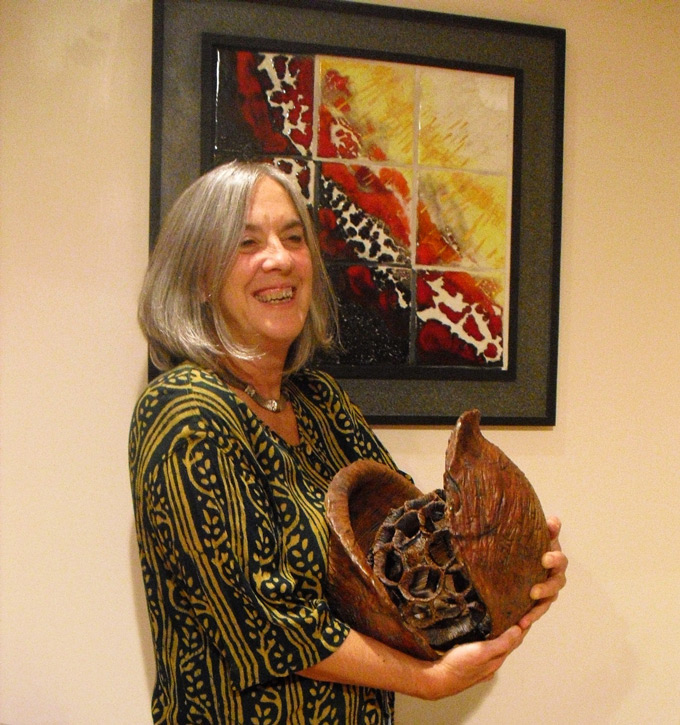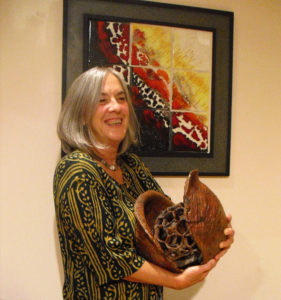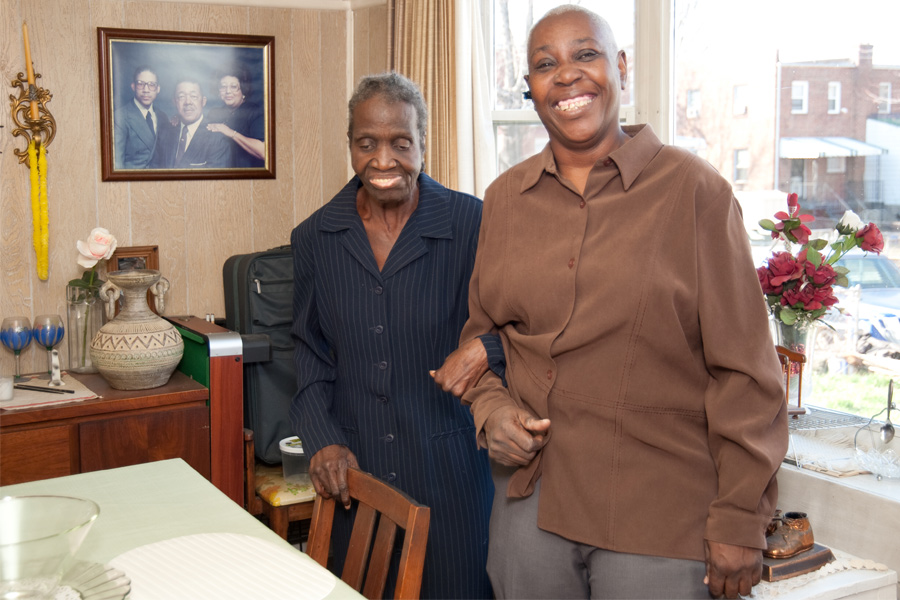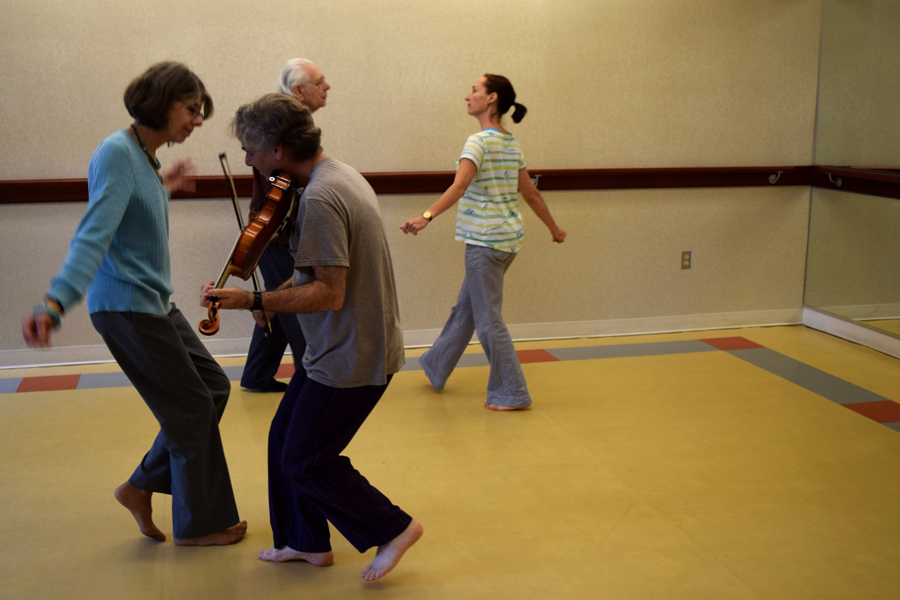Q&A with Guest Artist Liz Lescault

Iona Guest Artist Liz Lescault shares her inspiration and creative processes. Enjoy her glazed vessels and biomorphic ceramic artworks on display in the Lois and Richard England Gallery at Iona through May 23, 2017.
Q. Tell me a little about your background. When did you first start creating art?

I’ve been creating art as long as I can remember. As a child, I enjoyed painting and drawing. I did not pursue art as a college undergraduate but when my husband went to graduate school at Cornell University where they had a pottery shop I spent most of my time hanging out at the pot shop developing my skills on the wheel. Working with clay soon became a passion for me.
Later, when we moved to New Hampshire, I built my first gas-fired kiln, and resolved to become a professional potter. I joined the League of New Hampshire Craftsman, the oldest craft guild in the United States and one of the best developed and organized. A year or so later, I moved to another house in New Hampshire and built a 75-cubic foot “Monster” kiln and a dedicated studio. While building my kiln and studio, I developed a body of award winning miniatures, firing the miniature pots between other pottery in a friend’s kiln. And then, after my kiln and studio were built, I switched to making functional stoneware pottery again.
Another turning point in my career was when my husband took a job in Africa. I started studying pottery and ceramics in the villages in Botswana, and learned new earthenware and pit-fired techniques. My experience in Africa sparked a third body of work which connected my childhood love of Eskimo art and Native American pottery with “primitive” African pottery. So, when I moved back to the states, I combined my own techniques with things that I had learned in Africa to create a whole new body of work. While the geometric designs on unglazed surfaces were totally of my own creation, they bore a kinship to African and American Indian pottery. Unfortunately, that was never commercially successful in the Washington area. I would sell to people in the Southwest because it had the same flavor of American Indian art. So, I decided to move on and develop a line of pottery that would be sellable in the Washington metropolitan area.
After that, I started working with low fire glazed pottery, and developed some of the pieces that are going to be shown at Iona. They are multi-glaze, multi-fired, earthenware decorative vessel forms. The vessels have up to 24 layers of glaze with 3-5 glaze firings for each piece. People often think the vessels are glass and not clay. I developed a reputation for the vibrant reds and oranges which are unique to my work (though I do have many other colored glazes and crystalline effects that are also unique). I was very commercially successful with that body of work. At first, opening the kiln was just like Christmas. I was experimenting with so many variables, and it was very exciting. But eventually, I mastered the process and the excitement of experimentation was gone. I really had gone as far as I could with the multi-glaze, multi-fire technique and it was time to move on.
Q.So, since then, how has your artwork/process evolved?
When I got to a point where I was more financially stable, I began playing with biomorphic sculpture. I decided that money could no longer be part of the equation. I really just had to let go and follow my muse. It was also a time of my life that I thought, “if this is something I have always dreamed of doing, I need to do it now before the opportunity escapes me.” I let go of the commercial side and indulged my creative impulses.
While, I’ve always let my hands guide me, my technique has changed. I used to work primarily with the wheel. Now I work with altered wheel thrown forms and hand-building. The progression of my work can be compared to evolving from a classical musician, into a jazz musician. It took me many years to develop each body of work, and my show at Iona represents just two of the five I developed throughout my life’s exploration of art and craft.
Q. Where do you draw your inspiration?
As a child, I loved the Eskimo sculpture and Native American pottery. I’ve worked in other media over the years, but I always return to clay. With my current biomorphic sculptures, I draw my inspiration primarily from the organic world. My pieces draw from coral reefs, larva, electron microscope scans, flora and fauna.
Q. What is your artistic process?
I often look at things in nature when I go for a walk, or online or in books, and absorb what I see. Clay has an its special characteristics. I have to take into account what the clay can do and its fragility after it is fired in the kiln. I work in an improvisational way. I start out with a basic idea and I let the clay speak to me. Sometimes the finished piece is a surprise to me.
Q. Has your process changed as you’ve aged?
I’ve become more playful as I’ve gotten older. I’ve let go of a lot of stuff. I find myself able to be more exploratory in my life and not feel that I have to achieve certain goals, or that I have to meet certain expectations. Some artists are designers, but I am not. I’m more like a jazz musician. I love the freedom that I have with clay. I have a deep knowledge of how the clay works that only a life time of experience can afford. I work now at an improvisational and subconscious level.
Q. What does “creative aging” mean to you?
In my mind, I’m still young, though I’m aware that I’m aging physically. But, I’m still robust. I love to dance. I love to play. I know that my physical abilities will diminish with time and they have a bit already. I’ve thought a lot about how I am going to age with dignity and how I am going to age with self-confidence. I think the elderly are often dismissed, especially elderly women.
When I think about creative aging, I want to be able to laugh, to play, to feel good about myself. I want to accept the wrinkles. I can look at another older person if it’s not me, and I can see beauty in age. The deep lines in someone’s face tell you of their long-life journey. I strive for that acceptance for myself.
Q. What do you hope to evoke from visitors with your exhibition in the Gallery?
I hope that people derive pleasure from my work. When you give birth, and have children, once they’re outside of your body, they have their own life and they’re not entirely yours anymore. You might help to guide them and you maintain a deep connection, but they exist separately from yourself. It’s the same with my art. The interpretation of the work is up to the viewer, and I don’t try to guide the perception of my work. My sculpture is not conceptual it is evocative. I want the viewer to have their own experience.
Want to hear more from our Guest Artist?
Speak with and learn from Guest Artist Liz Lescault! Please join Guest Artist Liz Lescault at Iona for a free Lunch & Learn on Tuesday, February 21 from 12:30-2 PM. RSVP here today!
Related Articles

A Couple’s Vows Create Opportunities to Age Well

Can You Imagine Taking Three Buses to Get to Iona?

